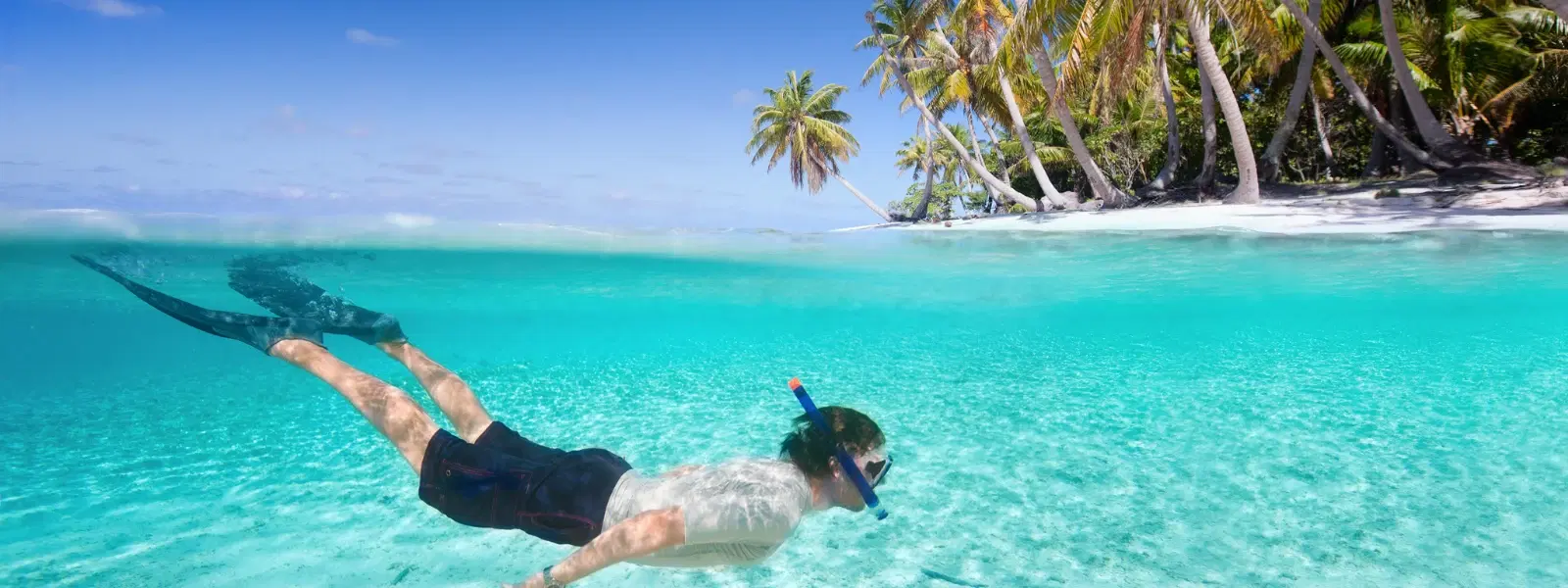
Hotels
•04 min read

The enigmatic and secluded Sentinel Islands have long been a subject of fascination, not only because of their remote location in the Andaman and Nicobar archipelago but also because of the dramatic differences between them. South Sentinel Island and North Sentinel Island may lie in close geographical proximity, yet they embody contrasting stories of isolation, nature, and human history. This blog post unveils the mysteries surrounding these islands and delves into their distinctive geography, population dynamics, wildlife, historical significance, and travel accessibility.
South Sentinel Island, a hidden gem within the Andaman and Nicobar Islands, boasts a unique geographical location that sets it apart from its northern counterpart. Known for its varied terrain, the island is encircled by lush waters, offering an impressive south sentinel island map that reveals its compact size and intricate coastline. Visitors searching for south sentinel island location details will discover a land of diverse terrain, from sandy beaches to rugged outcrops, which contribute to its distinctive south sentinel island geography.
Contrarily, North Sentinel Island is famed for its isolation, both geographically and culturally. While the island shares the same archipelago with South Sentinel Island, it features a slightly different landscape, with a less varied terrain and a harder-to-penetrate geographical outline. Its location not only emphasizes the isolation of its native Sentinelese tribe but also contrasts sharply with the relatively accessible South Sentinel Island.
Despite its scenic allure, South Sentinel Island remains uninhabited. Factors such as the lack of freshwater sources, limited space, and challenging environmental conditions contribute to its sparse history of human settlement. When pondering why south sentinel island population is zero, one must consider the delicate balance between nature and sustainability that this island maintains.
In stark contrast, North Sentinel Island is home to the elusive Sentinelese tribe, one of the last uncontacted peoples in the world. This inhabitants' resistance to outside influence highlights their commitment to preserving their traditional way of life. The human interaction on North Sentinel Island is minimal and guarded, thereby creating a cultural mystery that sharply differs from the uninhabited South Sentinel Island.

South Sentinel Island is a haven for biodiversity. Its vibrant coral reefs, serene beaches, and abundant marine life make it a unique ecological zone. The island is home to various species such as sea turtles, coconut crabs, and exotic birds that thrive in its relatively untouched south sentinel island environment. The natural beauty is not only a visual treat but also plays a vital role in sustaining local ecosystems.
Although North Sentinel Island harbors its own range of flora and fauna, its wildlife is largely overshadowed by the island's cultural narrative. The environmental conditions here are harsher, and the ecosystem has evolved in isolation, which results in a different balance of species. The protection of natural habitats on both islands is essential, but South Sentinel Island often draws attention due to its ecological significance.
The history of South Sentinel Island is interwoven with maritime exploration and navigation. Historically, the island has been used as a waypoint for ships navigating through the Andaman Sea, and its lighthouse stands as a silent testament to its role in guiding seafarers. South sentinel island history is rich with tales of discovery and the natural challenges faced by explorers venturing close to these mysterious waters.
North Sentinel Island presents a starkly different historical narrative. Here, the Sentinelese tribe has developed over centuries in near-complete isolation, nurturing a distinct cultural heritage that remains largely untouched by modern influences. The historical significance of North Sentinel Island is deeply embedded in its tribal traditions and the enduring mystery that surrounds their way of life.
South Sentinel Island renders itself as an intriguing destination, despite the challenges it poses to tourists. Although travel here is restricted primarily due to environmental concerns and the fragile ecosystem, adventurers can consider exploring nearby islands that share similar natural beauty. Travelers researching south sentinel island travel must be aware that visits are often limited and strictly regulated to preserve its sanctity. Its proximity to other scenic areas in the Andaman and Nicobar Islands further highlights the importance of exploring these destinations responsibly.

Unlike its southern counterpart, North Sentinel Island is completely off-limits for visitors. Legal restrictions and the desire to protect the indigenous Sentinelese culture ensure that no external contact is allowed. This strict prohibition secures the privacy and survival of its native population, marking a clear boundary between the two islands in terms of accessibility and human interaction.
South Sentinel Island remains uninhabited due to its small size, lack of freshwater sources, and environmental challenges that make sustained human settlement difficult.
The key differences lie in population (South Sentinel is uninhabited, while North Sentinel is home to the Sentinelese tribe), size, and levels of human interaction.
South Sentinel Island is not inherently dangerous, but its isolation and lack of infrastructure make it challenging for visitors.
South Sentinel Island hosts coral reefs, green sea turtles, coconut crabs, and other marine life, making it an ecological hotspot.
Travel to South Sentinel Island is extremely limited and discouraged due to environmental concerns and its status as a protected area.
In essence, while South Sentinel Island stands as a pristine natural habitat defined by its unique geography and rich biodiversity, North Sentinel Island remains a bastion of indigenous culture and isolation. Understanding these key differences not only increases our appreciation of the Andaman and Nicobar Islands but also reinforces the need to preserve these untouched havens for future generations.